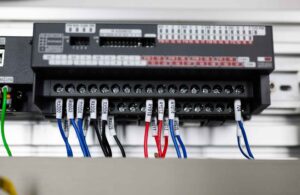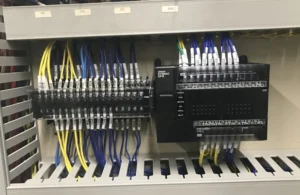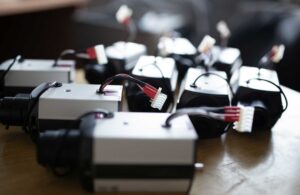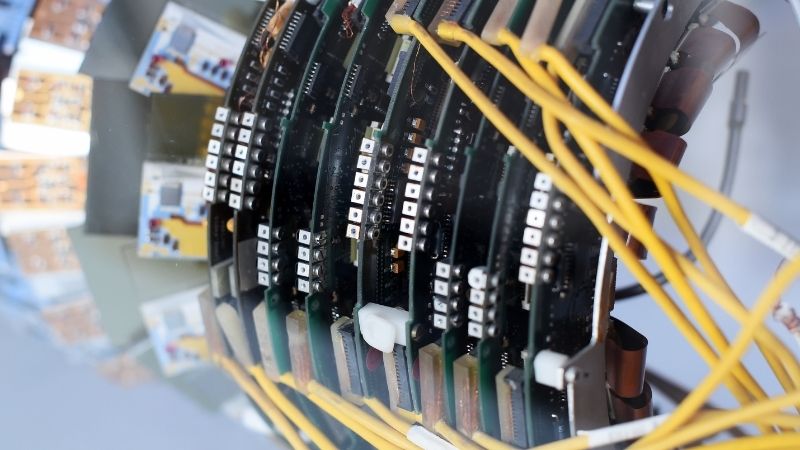Explicación de los interruptores de límite: tipos, usos y principios de funcionamiento
Este artículo profundiza en los tipos de interruptores de límite, cómo funcionan y por qué siguen siendo indispensables a pesar del aumento de la proximidad. sensores.
Tabla de contenido
¿Qué son los interruptores de límite?
Los interruptores de límite son dispositivos electromecánicos que responden al contacto físico. Cuando un objeto aplica fuerza al actuador del interruptor, se activa una conexión eléctrica para establecer o interrumpir el funcionamiento.
Esta función permite que los interruptores de límite detecten la posición, el movimiento o la presencia de un objeto, lo que permite un control preciso dentro de un sistema. Estos interruptores recibieron su nombre porque inicialmente se usaban para definir el límite de recorrido de un objeto.
Tipos de interruptores de límite
Existen cuatro tipos principales de interruptores de límite, cada uno de ellos adecuado para distintas aplicaciones en función de la forma y la función del actuador. Exploremos estos tipos:
- Bigote:El actuador se parece a un bigote o alambre y es adecuado para aplicaciones de contacto ligero.
- RodilloEquipado con un mecanismo de rodadura, este tipo es ideal para aplicaciones donde los objetos necesitan pasar rodando.
- Palanca:Un tipo clásico con un actuador de palanca, comúnmente utilizado para aplicaciones de uso general.
- Émbolo:Este tipo cuenta con un mecanismo de empuje directo y se utiliza comúnmente en aplicaciones de trabajo pesado.
Dependiendo de la aplicación, algunos interruptores de límite pueden combinar dos tipos, como un interruptor de palanca de rodillo, para satisfacer necesidades específicas.
Aplicaciones de los interruptores de límite
Los interruptores de límite están en todas partes, desde artículos domésticos cotidianos hasta maquinaria industrial. Algunos ejemplos comunes incluyen:
- Puertas de refrigerador:Al abrir el frigorífico, un interruptor de límite activa la luz interior, apagándola al cerrar la puerta.
- Puertas de garaje:En las puertas de garaje elevadas, los interruptores de límite garantizan que la puerta deje de moverse una vez que alcanza la posición completamente abierta o cerrada.
- Maquinaria industrial:En las fábricas, los interruptores de límite detectan la presencia de contenedores en las líneas de montaje o la posición de piezas móviles, mejorando la eficiencia y la seguridad.
¿Cómo funcionan los interruptores de límite?
Un interruptor de límite consiste en un actuador conectado mecánicamente a un interruptor eléctrico. Cuando un objeto entra en contacto con el actuador, hace que el interruptor abra o cierre el circuito, según la configuración. Este mecanismo permite un control confiable y consistente en diversas aplicaciones, desde controles de iluminación simples hasta sistemas automatizados complejos.
Configuraciones de interruptores de límite
Los interruptores de límite vienen en varias configuraciones, principalmente:
- Normalmente abierto (NO):El circuito está abierto hasta que se activa el interruptor.
- Normalmente cerrado (NC):El circuito está cerrado hasta que se activa el interruptor.
- SPDT (unipolar de doble tiro):Una combinación de configuraciones NO y NC, que permite un control más complejo.
Estas configuraciones proporcionan flexibilidad, permitiendo personalizar los interruptores de límite para diversos sistemas eléctricos y mecánicos.
Símbolos de interruptores de límite
En los esquemas eléctricos, los interruptores de límite se representan con distintos símbolos, que varían según el estándar. Los dos estándares principales para los símbolos de los interruptores de límite son:
- IEC (Comisión Electrotécnica Internacional):Un estándar internacional ampliamente utilizado.
- NEMA (Asociación Nacional de Fabricantes Eléctricos):Un estándar estadounidense que se ve comúnmente en aplicaciones de América del Norte.
Comprender estos símbolos es esencial para interpretar esquemas eléctricos, especialmente en aplicaciones globales donde los equipos pueden seguir diferentes estándares.
Sensores de proximidad frente a interruptores de límite
Aunque los sensores de proximidad se han vuelto más comunes en entornos industriales, los interruptores de límite aún se usan ampliamente, especialmente en entornos que exigen durabilidad. A diferencia de los interruptores de límite, los sensores de proximidad no tienen partes móviles, lo que reduce el desgaste.
Sin embargo, los interruptores de límite se destacan por su robustez y pueden soportar cargas de corriente más altas, lo que los hace más adecuados para aplicaciones de alto estrés. En situaciones en las que la confiabilidad en entornos hostiles es esencial, los interruptores de límite siguen siendo la opción preferida.
Potencie sus proyectos con PLC Omron, Mitsubishi y Schneider nuevos y originales: ¡en stock y listos ahora!
Conclusión
Los interruptores de límite son un componente indispensable en diversas industrias y brindan un control confiable y preciso en sistemas que van desde electrodomésticos hasta maquinaria industrial.
Si bien los sensores de proximidad están en auge, los interruptores de límite siguen siendo populares debido a su robustez y adaptabilidad. Si comprende los tipos, las configuraciones y las aplicaciones de los interruptores de límite, podrá tomar decisiones más informadas a la hora de seleccionar la mejor opción para su aplicación.
¿Buscas PLC nuevos y originales para tus proyectos? En Kwoco, tenemos en stock los PLC más recientes de las mejores marcas como Omrón, Mitsubishi, y SchneiderCompre con confianza: envío rápido, calidad garantizada. ¡Compre ahora!
Contáctenos
Simplemente complete su nombre, dirección de correo electrónico y una breve descripción de su consulta en este formulario. Nos comunicaremos con usted dentro de las 24 horas.
Categoría de producto
Productos en oferta
También te pueden interesar estos temas

Raspberry Pi como controlador PLC: exploración de la lógica programable
Descubra cómo Raspberry Pi está transformando los controladores lógicos programables y lo que significa para la automatización industrial.

Guía sencilla: Conexión de un PLC Omron a través de Ethernet
Conectar un PLC Omron a Ethernet puede parecer complicado, pero en realidad es bastante sencillo. ¿Alguna vez se ha encontrado en una situación en la que su proyecto necesitaba urgentemente conectividad remota con un PLC, pero no sabía por dónde empezar?

¿Los servomotores son de corriente alterna o continua? Entender las diferencias
Una pregunta que me hacen con frecuencia es: "¿Los servomotores son de CA o de CC?". Es un punto de confusión habitual y comprender la respuesta es fundamental para cualquiera que busque implementar servomotores de manera eficaz en sus sistemas. Profundicemos en este tema para aclarar las distinciones y ayudarlo a tomar decisiones informadas para sus aplicaciones.






